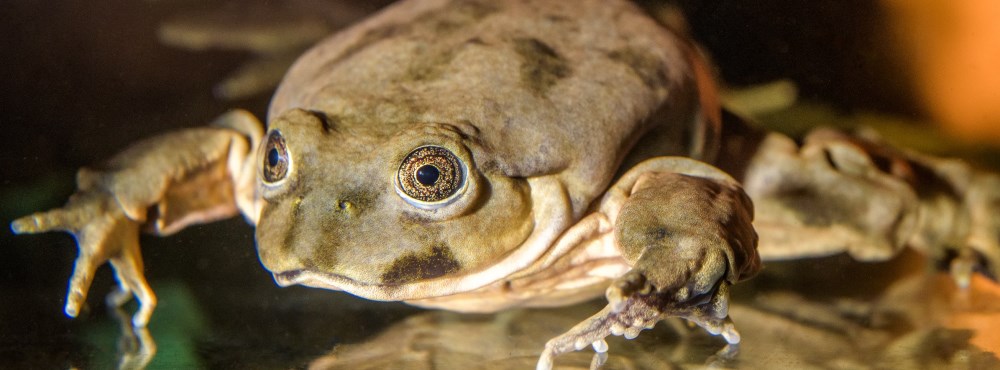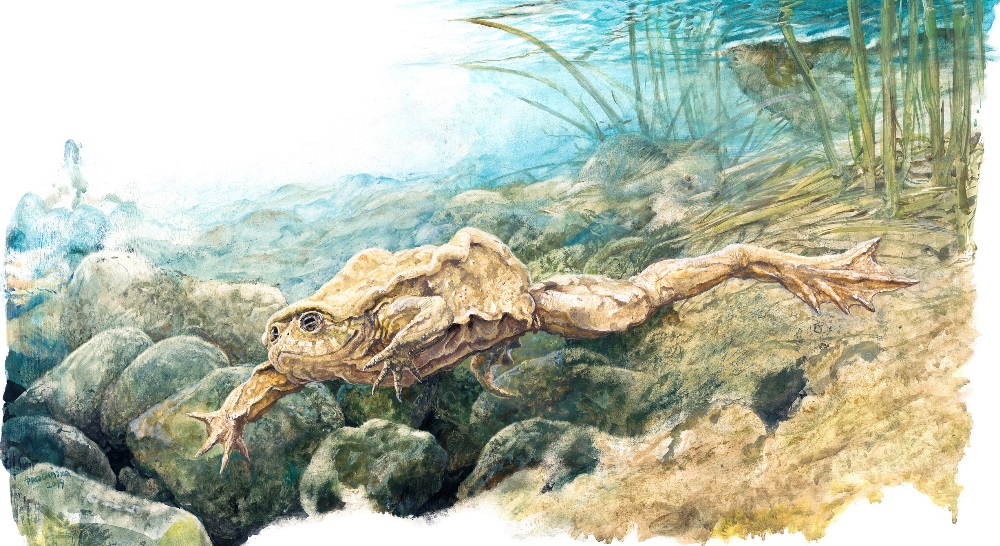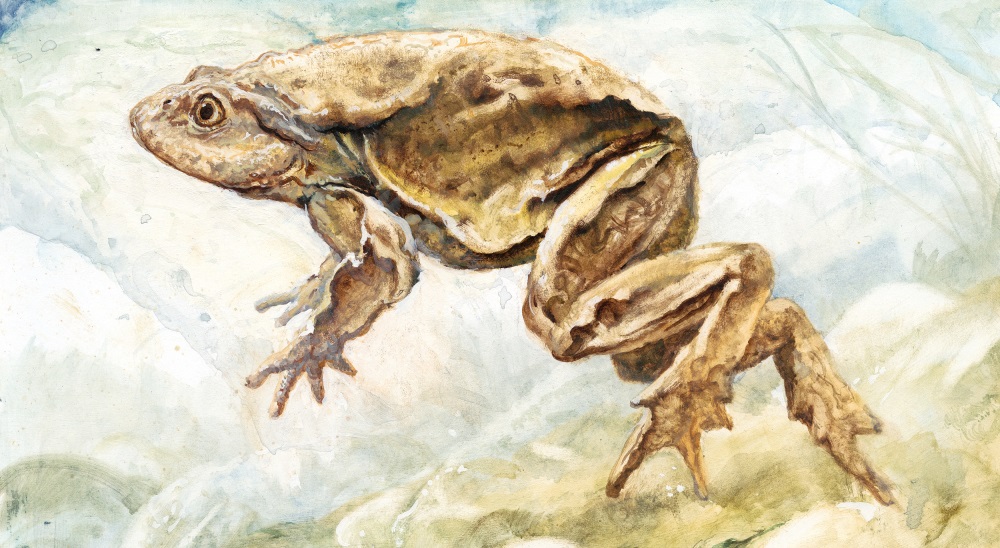Water frog

HOLY FROG FROM TITICACA
The Titicaca water frog is one of the most remarkable inhabitants of the high-altitude Lake Titicaca. Weighing as much as a kilogram, this frog spends its entire life in lake’s waters (it lives nowhere else in the world) and was observed as deep as 120 m! It used to be common and played an important role in the lake’s ecology, economy and culture. Nowadays it is on the verge of extinction.
BREATHING THROUGH ITS SKIN
The water frog’s lungs are small and underdeveloped; the frogs get all their oxygen through the baggy skin. Thus they can stay on the lake floor without having to rise to the surface. If they want to increase their oxygen intake, they simply jump up, which brings oxygenated water into their skin folds. They also support their breathing efficiency with a distinctive swimming style; by alternately kicking their legs they create a stream of oxygenated water around the folds of the legs.
A GIANT SALAMANDERS AMONG FROGS
The Titicaca water frog resembles the giant salamander in many ways. Both are the largest of their kind and among the largest predators in their habitat, both breathe through their wrinkled skin and are critically endangered. The water in Titicaca is so polluted that 10,000 dead water frogs washed up on the shore in 2016, and the lake’s unique ecosystem is dying. The voracity of the recently introduced rainbow trout is a threat for the lake’s wildlife, including tadpoles, and has already caused extinction of an endemic killfish (Titicaca orestias).

SLOW REPRODUCTION
Titicaca water frogs lay their eggs among aquatic plants in the densely overgrown shallows. It sometimes takes up to a year before the tadpoles become frogs, and even longer before they can reproduce. Unfortunately, Titicaca is gradually drying up and there are less and less places where the frogs can reproduce. The slow pace of reproduction, with a generational period of roughly 5 years, makes the Titicaca water frog a species highly susceptible to any external impacts.

FROG JUICE
For generations, the people living on the shores of Lake Titicaca hunted the Titicaca water frog – it was a very important source of food for them. Today, however, around 2 million people live around the lake and traditional hunting has taken on enormous proportions. Due to the ecological collapse of the lake, the water frog’s numbers have been drastically reduced and the demand for the allegedly aphrodisiac “smoothie” made from their skinned, blended bodies could easily become the last “nail in the coffin”.
AT HOME IN A SACRED LAKE
Lake Titicaca is the largest freshwater lake in South America and one of the most endangered lakes in the world. Tourists know it for the Uru people, who live on artificial floating islands made of “totora” sedges. For locals, the lake is a vital a source of drinking water and fish; Incas even viewed it as sacred and believed that the god Viracocha, the creator of the whole world, was born there. Right on the lake floor lies a monument to a civilization even older than the Incas – the ruins of a 1000–1500 year-old temple!









